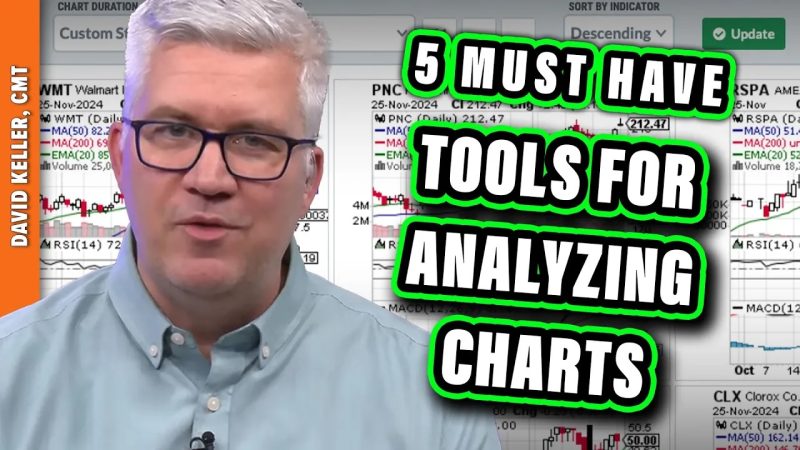In the fast-paced world of stock trading, having the right tools at your disposal can make all the difference when it comes to making informed decisions. Technical analysis is a critical aspect of trading, and having the right tools for analyzing stock charts can help traders gain insights into potential trends and opportunities in the market. Here are five must-have tools for analyzing stock charts:
1. **Moving Averages**: Moving averages are an essential tool for identifying trends and smoothing out price movements. Traders often use simple moving averages (SMA) or exponential moving averages (EMA) to determine the direction of a stock’s trend. By comparing different moving averages over different time frames, traders can identify potential entry and exit points in the market.
2. **Relative Strength Index (RSI)**: The Relative Strength Index is a momentum oscillator that measures the speed and change of price movements. It can help traders identify overbought or oversold conditions in a stock, indicating potential reversal points in the market. Traders typically use the RSI in conjunction with other technical indicators to confirm trading signals.
3. **Bollinger Bands**: Bollinger Bands consist of a simple moving average and two standard deviations plotted above and below the moving average. These bands help traders identify volatility in the market and potential price extremes. When the price approaches the upper band, it may indicate overbought conditions, while approaching the lower band may indicate oversold conditions.
4. **Volume Analysis**: Volume is a crucial indicator in technical analysis, as it shows the level of participation and interest in a stock. Analyzing volume patterns can help traders confirm price trends or potential reversals in the market. An increase in trading volume during a price move may signal a stronger trend, while decreasing volume during a price move may indicate a weakening trend.
5. **Candlestick Patterns**: Candlestick patterns provide valuable insights into price movements and market sentiment. Traders look for specific patterns, such as doji, hammer, engulfing patterns, and more, to predict potential price reversals or continuations. By understanding candlestick patterns, traders can make more informed trading decisions based on market psychology and price action.
In conclusion, having the right tools for analyzing stock charts is essential for traders looking to navigate the complex world of stock trading. By incorporating tools such as moving averages, RSI, Bollinger Bands, volume analysis, and candlestick patterns into their technical analysis toolkit, traders can gain valuable insights into market trends, identify potential trading opportunities, and make more informed decisions. By leveraging these tools effectively, traders can increase their chances of success in the dynamic and ever-changing stock market landscape.
